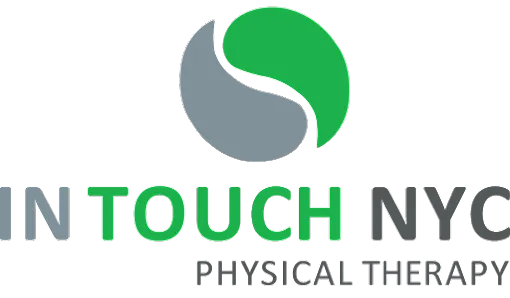Physical therapy supports recovery from injury and illness, but how can patients best receive this support? While they sometimes benefit from services provided within a healthcare setting, outpatient therapy is sometimes just as effective and significantly more convenient. Here is a look at some of the most frequent questions we here at In Touch NYC PT hear about outpatient therapy, and a look at when you may want to consider it for yourself.
Possess a reliable mode of transportation to appointments
Have the physical and mental ability to care for themselves at home in between appointments
Are capable and willing to follow through with at-home exercises
Are able to keep track of and manage their physical therapy appointments
If you would like to learn more about outpatient therapy, feel free to reach out to us. We are happy to answer your questions and discuss how we might be able to fulfill your PT needs.
1. What is outpatient physical therapy?
During outpatient therapy, you remain in your own home and travel to your physical therapy provider on a regular basis to receive treatment. As a result, this form of therapy is often more convenient and less intrusive than inpatient PT.2. What is the difference between outpatient and inpatient physical therapy?
Physical therapy occurs on an inpatient or an outpatient basis. Inpatient physical therapy refers toservices provided in a healthcare setting, such as a hospital or rehab center. Outpatient physical therapy refers to services provided through a physical therapy clinic. This approach includes regular visits to the clinic as well as assigned at-home exercises that patients are expected to complete between appointments.3. Can I continue my daily life during outpatient physical therapy?
One of the most appealing aspects of outpatient physical therapy is the fact that you can remain at home and go about your normal activities while receiving PT. Patients can continue to work, attend school, and fulfill family obligations without interfering with their physical therapy regimen. As a result,outpatient physical therapy can make it easier to get, and remain, on the path to health.4. How can outpatient physical therapy aid in the recovery process?
Outpatient physical therapy can serve as an indispensable tool in the process of recovering from illness or injury. In some cases, this approach can be just as effective as inpatient PT. Here are some of the primary ways outpatient PT can assist in your recovery:✔ It provides a convenient way to receive treatment
By enabling you to live at home and pursue your daily life, inpatient PT makes it easier to stay in therapy while you regain your strength.✔It educates you about your condition
Your physical therapist will spend part of your treatment time helping you to better understand your condition and how to address it. As a result, you will be better equipped to take the steps necessary to heal.✔It provides you with consistent treatment
Outpatient physical therapy aids in the recovery process by providing treatment on a consistent and predictable basis. As a result, patients are weekly, or more often, receiving the attention and expertise of a qualified therapist to help them heal.✔It can prevent recurrent injuries
Outpatient physical therapy focuses not just on helping you regain your normal function but also on preventing the recurrence of injury. Your physical therapist will educate you on preventive steps you can take and help restore strength and balance that can prevent falling and other injury-inducing events.5. What conditions can outpatient physical therapy treat?
Outpatient physical therapy can treat a wide array of injuries, illnesses, and chronic conditions. Here is a look at some of the most common conditions that can benefit from this form of PT:- Post-surgical recovery
- Multiple sclerosis
- Brain injuries
- Strokes
- Arthritis
- Neck, shoulder, and back pain
- Sport injuries
- Work injuries
- Pelvin pain
- Lymphedema
- Hand injuries
- Knee pain and injuries
- Balance disorders
- And more
6. How often will I go to outpatient therapy?
The frequency of outpatient physical therapy depends upon the patient and their specific needs. However, most patients typically attend PT anywhere from 1 – 5 times a week. Often, the more complex or severe the condition, the more frequently they will require physical therapy. The length of physical therapy will also vary from patient to patient. Some individuals only need to attend for a few months, while others will require therapy for a much longer period of time. Your PT will help you develop a plan of care that is suitable for your condition.7. What can I expect from my first session?
The treatment that patients receive from outpatient physical therapy depends upon their needs. However, most patients can expect to receive an evaluation during their first session. This evaluation will include answering a set of questions regarding their medical history, pain level, and goals, as well as a physical exam that will help the physical therapist evaluate your current physical condition and abilities. Once the evaluation is complete, the physical therapist will develop a treatment plan tailored to your needs. This plan will utilize state-of-the-art methodologies designed to facilitate your healing, and should include the frequency with which you will attend PT and the approximate length of time you will be in therapy.8. What is intensive outpatient therapy?
For patients who require additional support, intensive outpatient therapy can offer the support they need without admitting them to an inpatient program. Often, intensive programs allow patients to receive treatment from multiple disciplines (e.g. Occupational and physical therapy) at each visit, or provide one type of treatment (e.g. Physical therapy) on a daily basis. With frequent, consistent treatment, this approach can support a patient’s recovery, even if they have complex needs.9. How much does outpatient physical therapy cost?
On average, an outpatient physical therapy session will cost between $75 and $150. However, this cost can vary based on factors such as the following:- The specific treatments you receive
- The center you choose
- The area in which you live



